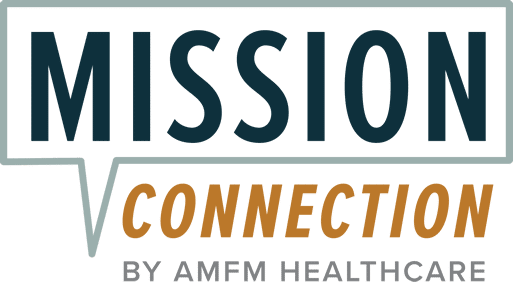Complex PTSD with Attachment Dysfunction: Understanding C-PTSD in Adults

Adult survivors of childhood trauma are usually affected by their early experiences, commonly having a hard time with mental health and in relationships. Some might also develop complex PTSD and attachment issues if they’ve experienced repeated traumatic events in their early years.
If bonds with primary caregivers were disrupted, adult relationships and sense of self can be impacted in several different ways. Fortunately, this area of mental health is well studied, so people with complex PTSD and attachment dysfunction can receive numerous forms of support and develop hope for recovery.
Advice and support from a mental health professional is the most recommended route for recovery from trauma. However, this article can also work as a useful guide, covering:
- What complex PTSD is and its causes
- The signs of unresolved attachment trauma and complex PTSD
- The different stress responses caused by trauma
- How complex PTSD and attachment dysfunction can impact relationships
- The available support options and how they can help in recovery

What Is Complex PTSD in Adults?
PTSD and complex PTSD (otherwise known as C-PTSD) are conditions that can arise after experiencing deeply traumatic events. They both can cause people to feel an ongoing sense of threat and hypervigilance. Plus, they may re-experience their trauma as if it’s happening in the present moment, and avoid things that remind them of their traumatic experiences.1
While PTSD is typically caused by a single traumatic event, C-PTSD is caused by “complex” trauma. This means experiencing prolonged or multiple traumatic events over a longer period of time.5
For example, people who develop C-PTSD might be emergency service workers or people who were repeatedly bullied. They may also be victims of kidnapping and hostage situations, prisoners of war, victims of intimate partner violence, and victims of slavery and human trafficking.5
C-PTSD can also be caused by repeated instances of interpersonal trauma at an early age.3 For example, persistent emotional neglect, sexual abuse, physical violence, or psychological intimidation.5 If this trauma occurs during childhood and the abuse or neglect is carried out by a child’s caregivers, attachment wounds can form. This is because the traumatic events may interrupt their ability to form a secure attachment.6
As a result, people with C-PTSD often also struggle with attachment dysfunction, adding another layer to emotional difficulties. So, any treatments must understand this complexity and target both to be effective. The next section looks at the symptoms of C-PTSD when there is also attachment dysfunction in more detail.
Signs of C-PTSD with Attachment Dysfunction
As well as the signs mentioned above (hypervigilance, re-experiencing, and avoiding reminders), there is another set of symptoms that distinguish C-PTSD from PTSD. These symptoms come under the umbrella of disturbances in self-organization ( DSO) and include:
- Having a negative sense of self
- Finding it hard to regulate emotions
- Experiencing difficulties in relationships
Let’s explore these in more detail.
A negative sense of self might involve feeling worthless or like a “failure,” as well as struggles with shame and guilt.1
Emotional dysregulation can manifest as reacting intensely to things that don’t seem to affect other people. For example, feeling hurt easily, taking a longer time to calm down, acting dangerously or recklessly, feeling numb, finding it difficult to feel joy. Someone with emotional dysregulation might also feel dissociative during times of stress (like feeling outside of one’s own body).1
Difficulties in relationships may include feeling distant or “cut off” from people. Someone might find it hard to stay emotionally close to others and avoid relationships because they feel too difficult or painful.1 So, DSO symptoms can affect the relationship with yourself and others. Naturally, there’s a lot of crossover between these signs of C-PTSD and attachment dysfunction.
Telling the difference between DSO symptoms and attachment trauma may be difficult as they overlap, but typically, attachment trauma symptoms include:
- Avoiding or intensely seeking emotional intimacy with other people
- Engaging in risky behaviors
- Suppressing emotional needs
- Mental health conditions like depression and anxiety
- Chronic stress and hypervigilance
- Relying a lot on reassurance from others
- Having dysfunctional relationships
- Over dependence on other people and reacting intensely to disappointment or betrayal
As a result of these symptoms, people with C-PTSD and attachment dysfunction can struggle in their close relationships, which we’ll explore after the next section.
Stress Responses After Trauma
Another aspect of the signs and symptoms of C-PTSD is how someone responds to a stressful situation. Different people with C-PTSD will respond differently, but typically, behaviors fall into one of the types of stress responses: fight, flight, freeze, or fawn.
These stress responses are normal reactions to danger and threat, but they can be overactive in people who’ve experienced trauma. If you are regularly responding in one of the following ways, this might signify that your brain’s stress response is overactive as a result of previous trauma:
- Fight: A quick temper, aggression, or being overly defensive
- Flight: Fleeing from conflict, feeling as though you’re trapped, distraction, fear of commitment, and making plans to avoid downtime
- Freeze: Completely shutting down, hiding from the world, procrastinating, or feeling numb
- Fawn: Acting overly agreeable, going along with the opinions of others, letting other people make decisions, and being overly aware of other people’s feelings
People with C-PTSD can experience any of these stress responses, but the fawn response is especially common in those with childhood trauma.9
How C-PTSD with Attachment Dysfunction Can Impact Relationships
The emotional and relational symptoms of C-PTSD and attachment trauma naturally impact the relationships people form with others.
Conflict resolution is a natural part of all relationships, but it can be more challenging if C-PTSD and attachment issues cause rage, aggression, or extreme avoidance. Partners might find that communication is difficult.4
Attachment trauma often results in an insecure attachment style, which is commonly disorganized or avoidant in people with C-PTSD.2 Someone with C-PTSD and disorganized attachment may deeply crave closeness but fear it simultaneously, resulting in a “push and pull” pattern. For example, they might intensely desire love but also feel unworthy of it. This might cause them to seek reassurance, but then later pull away in shame.
Couples might also be affected sexually by attachment trauma and C-PTSD. Typically, those with PTSD from sexual trauma report more difficulties in intimate relationships.7 This could look like an avoidance of or an over-reliance on sex; everybody is impacted differently.
In addition, partners, family members, or close friends might be impacted by their loved one’s symptoms of C-PTSD and develop something known as “secondary traumatic stress.” They might struggle with intrusive images of the initial trauma committed against their loved one or suffer from their efforts to empathize and be emotionally supportive.4
In other words, research finds that someone’s heightened levels of stress and vigilance can essentially be “transmitted” to the people they’re close to.4
Despite how C-PTSD affects relationships, it is still possible for individuals and couples to recover from the impacts of trauma. We’ll now explore different options for healing complex PTSD and attachment wounds.
Healing From C-PTSD and Attachment Dysfunction
Since the causes of C-PTSD and attachment wounds are often very deep and symptoms can be complicated, treatments should involve multiple approaches. It may or may not be helpful to include medication in your treatment, depending on other mental health conditions and their symptoms.7
However, complex PTSD support for adults should certainly focus on healing attachment wounds and reducing fears around emotional intimacy.
Attachment-based therapy for trauma is likely to help with this because these therapists have a good understanding of childhood trauma and how it shows up in adulthood. They can help people with C-PTSD foster more secure relationship bonds, transform negative self-beliefs, and improve their ability to manage difficult emotions.2
Your treatment might also use exposure as a therapeutic technique. This might mean confronting your avoidance of things that remind you of your trauma, but also avoidance of closeness with other people.2 However, it’s essential that your therapy is trauma-informed to avoid re-traumatization, which can happen when speaking about traumatic events without appropriate guidance and safely.
Humanistic therapies, cognitive-behavioral therapy (CBT), and eye movement desensitization and reprocessing (EMDR) might also be useful for healing from attachment wounds and C-PTSD.7 What’s most important is that you feel safe and supported in the counseling relationship.
Research finds that therapy for C-PTSD is most effective when it adapts to the needs of the individual.8 So it may be that you go through different types of therapy as you move through your recovery.
And finally, you might benefit from couples therapy if your attachment wounds and C-PTSD are impacting your relationship.4 A couple’s therapist can support communication, increase understanding, and help you both develop coping strategies for future conflicts.
Begin Healing C-PTSD and Attachment Wounds Today
People with complex PTSD are more at risk of developing major depressive disorder, borderline personality disorder, addiction issues, anxiety disorders, and suicidality.7 And all this can come on top of the emotional and relationship difficulties they may have. Therefore, support is essential for recovering from trauma.
Here at Mission Connection, we take a varied approach to support, providing a range of therapies, trauma treatments, and medication management if necessary. Your time with us might involve trauma education, improving emotional regulation, cultivating complex trauma recovery strategies, and building emotional resilience.
If you’re struggling with C-PTSD and relationship trauma, get in touch to discuss your needs and learn how we can help

References
- Shevlin, M., Hyland, P., Roberts, N. P., Bisson, J. I., Brewin, C. R., & Cloitre, M. (2018). A psychometric assessment of Disturbances in Self-Organization symptom indicators for ICD-11 Complex PTSD using the International Trauma Questionnaire. European Journal of Psychotraumatology, 9(1), 1419749. https://doi.org/10.1080/20008198.2017.1419749
- Karatzias, T., Shevlin, M., Ford, J. D., Fyvie, C., Grandison, G., Hyland, P., & Cloitre, M. (2021). Childhood trauma, attachment orientation, and complex PTSD (CPTSD) symptoms in a clinical sample: Implications for treatment. Development and Psychopathology, 34(3), 1–6. https://doi.org/10.1017/s0954579420001509
- U.S. Department of Veteran Affairs. (2014). Complex PTSD – PTSD: National Center for PTSD. Va.gov. https://www.ptsd.va.gov/professional/treat/essentials/complex_ptsd.asp
- Bachem, R., Levin, Y., Zerach, G., Cloitre, M., & Solomon, Z. (2021). The interpersonal implications of PTSD and complex PTSD: The role of disturbances in self-organization. Journal of Affective Disorders, 290, 149–156. https://doi.org/10.1016/j.jad.2021.04.075
- PTSD UK. (2024). C-PTSD, PDSD and Type 2 PTSD explained – PTSD UK. PTSD UK. https://www.ptsduk.org/what-is-ptsd/complex-ptsd/
- The National Child Traumatic Stress Network. (2018, May 25). Complex trauma. The National Child Traumatic Stress Network. https://www.nctsn.org/what-is-child-trauma/trauma-types/complex-trauma
- Mann, S. K., Marwaha, R., & Torrico, T. J. (2024). Posttraumatic stress disorder (PTSD). StatPearls Publishing. https://www.ncbi.nlm.nih.gov/books/NBK559129/
- Horesh, D., & Lahav, Y. (2024). When one tool is not enough: An integrative psychotherapeutic approach to treating complex PTSD. Journal of Clinical Psychology, 80(7). https://doi.org/10.1002/jclp.23688
- PTSD UK. (n.d.). It’s so much more than just “fight or flight” – PTSD UK. PTSD UK. https://www.ptsduk.org/its-so-much-more-than-just-fight-or-flight/






